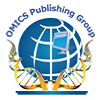Our Group organises 3000+ Global Conferenceseries Events every year across USA, Europe & Asia with support from 1000 more scientific Societies and Publishes 700+ Open Access Journals which contains over 50000 eminent personalities, reputed scientists as editorial board members.
Open Access Journals gaining more Readers and Citations
700 Journals and 15,000,000 Readers Each Journal is getting 25,000+ Readers
Indexed In
- Google Scholar
- RefSeek
- Hamdard University
Useful Links
Share This Page
Aim and Scope
| » | JBBTE is dedicated to publishing original research and expert review papers in the general areas of biomimetics, biomaterials, and tissue engineering. JBBTE is thus a multidisciplinary journal intersecting the areas of biology, biochemistry, materials science and engineering. While the editors will consider all manuscript submissions in these general areas, the intention of this journal is to explore the field of biomimetics and how it can be the key to scientific progress in the related areas of biomaterials and tissue engineering: |
» |
Biomimetics involves taking inspiration from nature in the development of technology. While the term "biomimetics" was coined some time ago, as a research field it is very new. Biomimetics involves the study and mimicking of natural processes, which may be useful in drug research, biomedical engineering, and unravelling the nanomachinery of life in general. Applied biochemistry and also mathematical and computational biochemistry are key tools in this regard. Biomimetics involves not only the design of new materials, but is also concerned with understanding the mechanisms by which natural materials achieve their material properties, from the information in the genome, to the nanostructure of life-forms and tissues, right up to the micro and macrostructure of natural biological structures. Biomimetics is a broad area, therefore the scope of this Journal will be principally confined to biomimetics as it relates to the fields of biomaterials and tissue engineering. However, broader research in the biomimetics field is also welcome. |
» |
Biomaterials relates to the study of biocompatible materials used for biomedical applications. It involves not only synthetic materials (e.g., biometals, biopolymers, bioceramics, and biocomposites), but also biological materials (e.g., proteins, cells, natural tissues, etc.). Biomaterials research encompasses various topics including: materials synthesis and characterisation, surface modification, biostability and biodegradation, and cell-material and/ or tissue-implant interactions. Typical biomaterials out of biomimetics include, but are not limited to, nano-biomaterials, smart biomaterials, hybrid biomaterials, nano-biocomposites, and hierarchically porous biomaterials. |
» |
Tissue Engineering is a newly emerging field that offers hope to people with compromised tissue function. Tissue engineering focuses on the construction of biological substitutes containing viable and functioning cells for the restoration, maintenance or improvement of tissue function. Tissue engineering embraces many research areas including: biomaterial scaffolds, stem cells, bioreactors, and cell biology. Tissue engineering is biomimetic in the sense that autografts are still the gold standard and the human body is a complex and sophisticated bioreactor. |
» |
Peer Review (JBBTE) is a periodical published bimonthly. Interested authors are requested to comply with the instructions for authors. |
» |
Internet Journal of Biomimetics, Biomaterials, and Tissue Engineering is available online. |
» |
Open Access is a publication model, that enables the dissemination of research articles to the global community without restriction usually through the internet. Thus, all articles published under Open Access can be accessed by anyone with internet connection. Journal of Biomimetics Biomaterials and Tissue Engineering (BBTE) strongly supports the Open Access initiative. Abstracts and full texts (HTML, PDF and XML format) of all articles published by Journal of Biomimetics Biomaterials and Tissue Engineering (BBTE) are freely accessible to everyone immediately after publication. |
» |
All works published by OMICS Group are under the terms of the Creative Commons Attribution License. This permits anyone to copy, distribute, transmit and adapt the work provided the original work and source is appropriately cited. Journal of Biomimetics Biomaterials and Tissue Engineering (BBTE) supports the Bethesda Statement on Open Access Publishing. |
Definition of Open Access Publication |
|
» |
An Open Access Publication is one that meets the following two conditions: |
|
|
| » | As a member of Publisher International linking Association, PILA, Journal of Biomimetics Biomaterials and Tissue Engineering (BBTE) (of OMICS Publishing Group) follows the Creative Commons Attribution License and Scholars Open Access publishing policies. |
Note: |
|
» |
Community standards, rather than copyright law, will continue to provide the mechanism for enforcement of proper attribution and responsible use of the published work, as they do now. |

 Spanish
Spanish  Chinese
Chinese  Russian
Russian  German
German  French
French  Japanese
Japanese  Portuguese
Portuguese  Hindi
Hindi